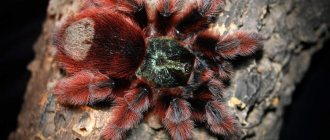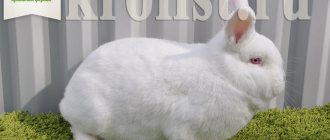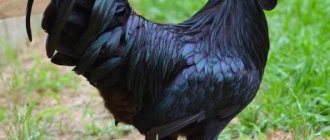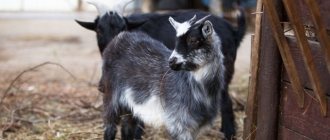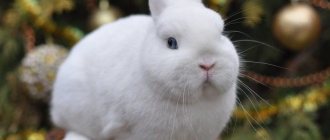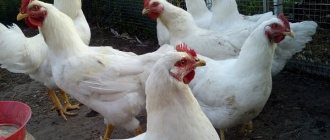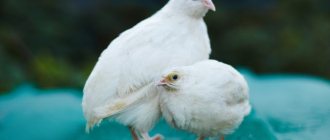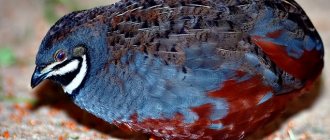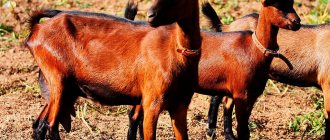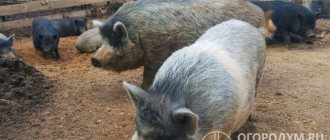Spiders 08/07/202010652 views
So, you had a desire to have an exotic pet, and you wanted to buy yourself a tarantula spider. There is a lot that speaks in favor of your decision. Tarantulas are great animals to keep at home: they take up minimal space, you need to feed them once a week (or even a month), you can always surprise your friends and relatives with this pet. But where to start?
First, it should be said that not all tarantulas are safe to have as a first pet. Asian, Australian and African species are completely unsuitable as the first spider. The fact is that they are extremely aggressive and have a very toxic poison. Spiders of the New World are ideal for a beginner, namely most of the species from such genera as Acantoscurria, Brachypelma, Grammostola. These spiders are quite unpretentious, cheap and for the most part non-aggressive. In fact, you can get anyone as your first spider, but some of these animals can pose a potential, although not fatal, danger, and there may be species that are very demanding in terms of keeping conditions.
Kit for tarantula genus Brachypelma “Standard”
How to make and decorate a terrarium for a red-eared turtle: drawings, description, photo
Exotic animals are quite suitable for keeping at home. However, for their full existence it is necessary to create suitable conditions. For this purpose, terrariums are equipped.
Important: To keep pets in a terrarium, it is necessary to recreate an ecosystem similar to the living conditions of animals in natural conditions.
We will tell you what requirements a terrarium must meet to keep various animals. Let's start with the turtle. At home, you can keep land turtles, as well as freshwater turtles (including red-eared turtles).
The most important mistake is keeping these animals on the floor of an apartment or house. You can organize a ground terrarium; it must have suitable characteristics. However, it is unacceptable to allow a turtle to roam around the apartment; this is harmful for the pet.
There are many species of land turtles For home keeping, in most cases, medium-sized turtles about 20 cm are chosen. You can make a terrarium for a turtle yourself, what you need for this:
- Purchase and glue glass;
- Organize ventilation;
- Carry out UV lamps;
- Select soil.
For a small turtle of about 12 cm, a terrarium with a minimum size of 60x40x40 cm is required. But it is important to make sure that there is enough space if the turtle grows. If there are several turtles, the sizes should accordingly be twice as large.
The terrarium of land turtles should not be cluttered with various kinds of obstacles that will interfere with movement. The following soil should be placed on the bottom:
- A mixture of sand and clay;
- Hay;
- Wood chips;
- Large pebbles.
Terrarium for a land turtle
For red-eared turtles , whose size is in the range of 18-30 cm, a terrarium of 150-200 liters is required. Water should occupy 3⁄4, and land - 1⁄4.
Important: For red-eared turtles, it is necessary to organize a sloping bank with no scratchy texture. The water must be at least 20°C.
Terrariums for turtles should be well ventilated. For this, two holes are made:
- The first is large, located on top of the terrarium;
- The second is small, on the front wall of the terrarium at the base of the soil.
Air temperature is a very important factor that should be properly organized in the terrarium. The turtle terrarium is equipped with a 60 W incandescent lamp, which is installed on top. Bottom heating is not recommended, as it is harmful to the animal’s kidneys. The lamp should heat one corner more strongly, here the turtle will bask and eat food (temperature about 28°C). The house is installed in a cooler corner (about 24°C).
Aquaterrarium for the red-eared turtle
Scheme of organizing a terrarium for a turtle
Choosing a pet
Since the role of a pet must certainly be a bright, eye-catching specimen, accordingly, the option with our practically “native” haymaker spider immediately fades into the background. And why disturb the cute eight-legged “neighbor” by driving him into a terrarium, besides, these creatures are already domestic and probably huddle in one (in most cases, several) of the cozy corners of your house. We’ll leave them there, and for home keeping we’ll choose someone nicer, for example, a tarantula. By the way, representatives of this particular species are the most common and popular spiders for home keeping. And there are several reasons for this:
- firstly, they are very beautiful - bright colors, large sizes, shaggy body;
- secondly, it reproduces well in captivity and, accordingly, is amenable to breeding;
- thirdly, it lives relatively long;
- fourthly, this species includes several hundred subspecies, which opens up a huge selection.
On a note! The venom of a tarantula spider is not fatal for an adult healthy person, but for other pets its bite can be fatal, for example, for cats, dogs, etc. In addition, tarantula venom can seriously undermine the health of a small child and a person with allergies!
However, tarantula spiders are far from the only representatives of their order that are chosen for home keeping. In addition to them, wolf spiders, often tarantulas, cross spiders and even baby jumping spiders are also in demand.
Criterias of choice
Having come to a pet store, say, for a kitten, we roughly understand what requirements to put forward for it: clean eyes, ears, a wet nose, etc. But what about the spider? What parameters should this creature advise?
So, let's examine the spider we like. It should be:
- Active. If it is absolutely immobile for a long time or moves very slowly, then most likely this specimen is sick.
- Healthy. The health of a spider is indicated by the state of its abdomen: when dehydrated, it becomes wrinkled; in a healthy arachnid, on the contrary, it is even and smooth. You should also pay attention to the condition of the hairs in this area - in a sick spider they will be of unequal size and combed in places.
On a note! When a spider is disturbed by painful sensations, it scratches its abdomen with its hind legs, tearing off some of the fibers!
- Small. A spider of particularly large size may turn out to be old, therefore, it will not illuminate your life with its presence for long. Also, remember that males are always slightly smaller than females.
- No visible damage to the body. However, here one should take into account the fact that some types of spiders may have broken off limbs that grow back after molting.
How to make and decorate a terrarium for Achatina snails?
Achatina snails are large sized mollusks. It’s easy to keep them, because these snails are undemanding to conditions. Even in the temporary absence of the owner, they can feel good if taken care of in advance.
A terrarium for Achatina snails can be made of regular or plexiglass, or you can use a plastic container. The “house” for snails should have small holes for ventilation. It must be of such a size that the snail does not escape.
Important: Achatina snails need space for a comfortable existence. A 3 liter container is suitable for one snail; for two snails - 5 l.
Container equipment requirements:
- Cover the bottom with flower substrate without fertilizers; snails love to burrow into the soil. Suitable substrates include sand, walnut shells, and coconut shells. The bad layer is clay and tree bark.
- The soil should always be moist, but not waterlogged. The soil is sprayed with a spray bottle daily.
- There is no need to install lighting lamps for snails. Soft, diffused daylight suits them. During the day, snails hide in the substrate and are awake at night.
- The air temperature in the container should be about 24°C.
To cover Achatina snails, fragments of flower pots, coconut shells, and stones are placed inside the container. Also, living plants are planted in the substrate: moss, ivy, fern, lettuce, cereals, etc.
Terrarium for Achatina snails: top view
How to make and decorate a terrarium for a tarantula spider, ants, Madagascar cockroaches, and a praying mantis?
Insect terrariums must also have a number of certain characteristics. If everything is done correctly, the life of insects will be comfortable and safe.
Let's look at how to set up terrariums for various insects.
Terrarium for a tarantula spider:
- Keeping a tarantula spider at home requires a spacious terrarium. There should be no objects with great height inside to prevent the tarantula from falling.
- Provide shelter. Pieces of bark, flower pots and other similar devices are suitable for this.
- It is not recommended to place stones in the tarantula spider's terrarium, as the insect may be injured.
- The size of the terrarium is calculated as follows: the length of the spider’s legs is multiplied by two. For example, the length of the legs of an adult spider is 14 cm.
- In this case, the size of the “house” should be 30x30x20 cm. Moreover, 20 cm is a safe height for a tarantula spider.
- Be sure to make holes on the sides and top for ventilation.
- The bottom is covered with soil, and branches are placed for tree spiders.
Terrarium for a tarantula
Terrarium for a praying mantis:
- A vertical terrarium is suitable for the praying mantis.
- Pour soil into the bottom and place a layer of foliage on top. If the foliage is large, additional cover is not required.
- Humidity should not be too high; spraying is not recommended frequently.
- The temperature in the terrarium is 25°C.
- The terrarium should not be placed in direct sunlight.
- Ventilation is required.
Contents of the praying mantis
terrarium for ants :
- To keep unusual pets, a narrow flat container is required.
- Sometimes 2 jars are used to maintain an ant farm, so that one fits into the other. Both jars are closed with lids. An ant family is located in the space between the banks.
- A terrarium for ants is called a formicarium. Sand or a special gel containing additives for ants is poured inside.
- Some people collect ants in the forest and collect soil there.
Formicarium
Terrarium for Madagascar cockroaches :
- If the terrarium for Madagascar cockroaches is not equipped with a lid, then lubricate its walls with Vaseline so that the insects do not escape. It is better to cover the home of Madagascar cockroaches with a lid with holes.
- There must be a lot of hiding places inside. To do this, they use egg trays; cockroaches love them for the presence of cells, toilet paper rolls, pot fragments, and wood.
- The flooring should be made of fragrant wood with sand. The wood is preferably coniferous, it is changed periodically.
Keeping Madagascar cockroaches
Feeding the spider
All conditions for the spider have been created, now you need to take care of the spider’s nutrition. You need to feed the spider with live food, such as zoobass, crickets and cockroaches. The food should be approximately 2 times smaller than the spider’s body. It is not recommended to feed spiders with vertebrates, except in cases where the spider is very large and can in nature eat the same mouse, such as Theraphosa blondi. Spiders should not be fed insects caught in the wild, as they may be infected with parasites or contain insecticides. Small spiders need to be fed as often as possible until they can eat and are not about to molt; adults - much less often. The ideal formula for feeding a spider is the number of molts + 1, where the resulting number will be the number of days after which the spider needs to be fed. If you forget to feed your pet, don’t be alarmed, spiders can refuse to eat for no reason for six months, and even, in rare cases, for a year, and this does not negatively affect the spider’s health, quite the contrary. It has been proven that spiders that were periodically hungry live longer than their counterparts that were constantly fed.
How to make and decorate a terrarium for rodents and hamsters?
In most cases, rodents, including hamsters, are kept in cages. Rodents can also be kept in terrariums, providing air access.
Terrariums for hamsters can be made of plastic. They have a number of advantages over the cage:
- Firstly, sawdust does not fall out of the terrariums;
- Secondly, at night you can’t hear the hamster gnawing on the bars of the cage.
A hamster can be kept in terrariums of varying sizes; the size of the pet should be taken into account. If there is a well-equipped “home”, the pet will feel quite comfortable.
How to design a terrarium for a hamster:
- Cover the bottom with sawdust or hay;
- Place a drum or wheel, a feeder, a drinking bowl;
- It is also necessary to have dry twigs and sticks; the hamster will sharpen its teeth.
Comfortable house for a hamster
Types of tarantulas
Science knows a huge number of a wide variety of spiders, ranging from poisonous ones to the largest individuals. The size of the tarantula's terrarium is selected based on the size and characteristics of the arachnid.
Using the same method, the breeder chooses a house for the spider. According to their lifestyle, insects are divided into the following types:
- woody. The habitat of this breed is shrubs and trees under which they hide. In appearance, the dwelling is very similar to a nest made of cobwebs. It may be under a snag or in a hollow;
- burrows. Spiders make large holes in the ground and settle there;
- ground. This species prefers to settle on the surface. In most cases, spiders occupy the burrows of other living creatures to live.
What helps maintain humidity in a terrarium?
Keeping many exotic pets requires a certain level of humidity in the terrarium. For some animals, high humidity is indicated, for others, humidity is contraindicated. For example, hamsters will feel great in dry sawdust, Achatina snails vitally need a wet extract, mantises will not be able to survive if there are drops of condensation in the terrarium.
Important: The easiest way to maintain humidity in a terrarium is to spray the soil with water from a spray bottle.
The required soil moisture for pets is different:
- Humidity for Achatina snails is checked in this way - squeeze a handful of soil in your hand, if water drips, then the soil is waterlogged. Achatina snails react negatively to high humidity: they hibernate, become lethargic, and lose their appetite.
- Moisture is also important for ants. You can determine the level of sufficient moisture in the formicarium as follows: if perspiration appears on the walls, stop spraying.
- The soil in the praying mantis terrarium should be sprayed rarely. It should be slightly damp. How often this needs to be done is difficult to say for sure, it depends on the air circulation in the terrarium.
- The optimal humidity level for the tarantula spider is 35-60%.
You can determine the exact air humidity using a hygrometer .
A hygrometer determines the humidity level in the terrarium
How to make the temperature 33 degrees in the terrarium?
Important: Temperature is one of the most important requirements for maintaining the microclimate in the terrarium.
Terrarium animals are very sensitive to temperature changes. All animals have their own biological needs for thermoregulation.
Various devices are used to maintain temperature:
- Heating lamps;
- Heated mats;
- Ceramic heaters;
- Infrared lamps.
- Heating thermal cords.
Warm areas are made for scaly ones. In these “sunny areas” the pets periodically bask. Then they crawl to places with lower temperatures. Heating lamps are suitable for this. They should be placed in such a way that the pet does not get burned from touching.
For snakes, heating mats are used under the ground; turtles are heated from above. To heat the snails, use a heating pad or rugs.
A budget-friendly heating method is to place the terrarium near heating radiators or heaters. But this method has a number of disadvantages that can affect the normal life cycle of animals. Still, it is better to use special devices for heating terrariums.
Important: You can and should monitor the temperature in the terrarium using a thermometer.
How to make and decorate a large terrarium from an aquarium for plants and flowers?
A terrarium is not only a “house” for your beloved pets. You can grow plants in a terrarium. Terrariums with plants have many advantages:
- They are easy to care for.
- This is a luxurious element of the interior.
- Suitable for people with a minimum of free time and a desire to have indoor plants at home.
- A good alternative to flower pots.
Aquariums are suitable bases for terrariums. But before you fill it with soil and plants, you need to understand which plants are suitable for terrariums:
- Plants that prefer or tolerate shade easily.
- Dwarf plants. It is important that the plant does not outgrow the walls of the terrarium, otherwise its appearance will suffer over time.
- Plants that love humidity.
Plants that are most often grown in a terrarium are moss, cacti, and succulents.
If you decide to turn an aquarium into a terrarium with plants, keep in mind that the aquarium with soil will become very heavy. Therefore, do not place it on fragile tables. Also, such terrariums should not be placed under air conditioning or in close proximity to heating appliances.
Think in advance about how the lighting will be maintained. Direct sunlight is contraindicated for the terrarium, but darkness is also unacceptable. Optimal lighting is indirect diffused light. You can use special garden lamps.
Large terrarium for plants
Important: If you decide to use an old aquarium, wash it thoroughly with antibacterial agents or soap. Residues of dirt and bacteria can subsequently harm the plants.
To arrange a terrarium, in addition to plants, buy a soil mixture with drainage. It is desirable that the soil contains the addition of bog moss or sphagnum. You will also need pebbles (gravel), moss, all kinds of decorations, and gloves.
The following layers are placed in the aquarium:
- Pebbles or gravel . You can add a handful of activated carbon, this will serve as additional drainage.
- Moss . A layer of moss will prevent soil subsidence and retain moisture.
- Soil . The soil layer should be thick enough to accommodate the plant roots. Also, the thickness of the soil depends on the height of the aquarium.
- Plants . Plant the plants in the holes. Water the plants.
At the end, you can add decorative elements that will not be damaged by excess moisture. These can be any objects: shells, figurines, coins. At this point, the organization of a terrarium for plants is ready.
How to choose the right pet
When choosing a pet, you should consider its gender and age. If in most species the male lives for about 4 years, then the female can reach the respectable age of 25-30 years, and caring for her will become the work of your whole life.
It is not recommended to buy old spiders, no matter how beautiful and huge they are. In old age they have many diseases and various parasites, so their life span is short. Their previous owners are simply trying to profitably get rid of sick animals.
It is better to stop your choice on spiders of 5-7 molts. Older individuals will take a long time to get used to the change in environment, which will invariably affect their well-being. Buying spiders with 1-2 moults makes it difficult to determine the species. After a year of keeping it, it may turn out that the furry little animal will not be the one you have long dreamed of.
How to make and decorate a terrarium with your own hands from a can, bottle, plastic
The plant terrarium is called florarium. You can grow plants in a bottle or jar. This flower arrangement takes up very little space, but looks impressive.
Growing plants in a jar or bottle is similar to growing plants in a greenhouse. The presence of container walls allows you to maintain the necessary microclimate of the florarium. Jars with plants are covered with lids or a small hole is left.
The disadvantage of growing plants in a jar is the difficulty of care. Cleaning a florarium and getting rid of dead plants can be quite troublesome. But, nevertheless, this does not stop connoisseurs of florariums.
For the florarium, you can use both glass and plastic bottles. Plastic containers are inferior to glass ones in their characteristics and appearance. The container does not have to be in the form of a jar. These can be vases, serving caps, large glasses, etc.
Important: You cannot grow plants that are incompatible with each other. For example, succulents and ferns. These plants have opposite watering requirements, so there is a risk that the florarium will deteriorate.
In addition to evergreen exotic plants, you can grow a single flowering plant in a jar. Recently, it has become fashionable to give such flower arrangements. The advantage of such a gift is its durability. You can, of course, give a flower in a pot, but a florarium looks more impressive and stylish.
Florariums are used to decorate home and office interiors. A row or series of florariums looks original. The process of planting plants in a jar or bottle is essentially no different from planting plants in an aquarium. However, planting plants in a container with a narrow neck is painstaking work.
How to plant plants in a bottle or jar:
- First, layers are poured in the same order as in the aquarium: pebbles, moss, soil.
- Use a long narrow stick to make indentations.
- Carefully remove the plants, along with their roots, from the pots in which they were sold.
- Using two long sticks, place the plants into the holes.
Caring for the terrarium is not difficult: just water the plants as the soil dries out, and also wipe off the dust from the jar inside and out. If there are no problems with wiping dust from the outside, then many may be puzzled - how to wipe the dust inside the terrarium? This is not difficult: you can wrap a piece of soft sponge on a flexible wire, which will simply cope with dirt. A soft-bristled toothbrush will also work if it is the right size for your terrarium.
Florarium
Shedding
Spiders, like all arthropods, cannot grow constantly, like you and me. This is due to the fact that they have a hard exoskeleton. Therefore, when the spider accumulates the required amount of nutrients, it refuses to eat. If a spider has stinging bristles, it scratches them off, so that the abdomen becomes bald. Gradually the abdomen turns black - this means that the old cover is moving away from the new one. The spider then spins a very sticky web, turns over on its back, and completely sheds its old skin within a few hours. After molting, a spider can grow 1.5-2 times within a few hours. Molting is an amazing period in the life of a spider. During this period, he is able to regenerate damage and even regrow lost limbs. The main thing is that if you are convinced that the spider is going to molt, you need to minimize contact with the spider, do not forget to maintain the required level of humidity, or even better, increase it, since this determines whether the spider’s skin will peel off well. Otherwise, pieces of skin may remain on the spider's body and lead to serious damage and even death. That's all a beginner needs to know about keeping a spider.
Author: Artem Zenkevich Source: [https://vk.com/paukinasekomie|ExoticPlanet]
How to make and decorate an eternal mini-terrarium from a light bulb?
Terrariums made from light bulbs look original and stylish. The most common light bulbs of different sizes are suitable for making such a terrarium. To begin with, we recommend trying to work with the largest light bulb.
You will need:
- Large light bulb;
- Screwdriver;
- Round nose pliers;
- Scissors;
- Long tweezers.
Be sure to protect your eyes with goggles, as pieces of glass may fly off during operation.
Step-by-step production:
- Remove the metal seal on the light bulb base.
- Then use a screwdriver to very carefully break the internal parts of the light bulb.
- Using long tweezers, remove the “entrails”.
- Finish the hole well with a screwdriver so that there are no sharp edges.
- To stabilize the light bulb, make legs by adding 2-4 drops of silicone glue.
- Now pour sand and dry moss through the funnel and place the plants using long tweezers.
- You can use small pebbles and plastic figures as decoration.
- A mini-terrarium made from a light bulb can be placed on a stand. This will make it even more impressive.
Mini terrarium in a light bulb
Ideas for hanging and tabletop terrariums: photos
Below you will find ideas for plant terrariums of various configurations and with different plants. Get inspired to create beautiful and unusual home decorations with your own hands.
A small terrarium in a glass cup is perfect for decorating your desktop.
Tabletop terrarium
Hanging terrariums of different sizes are convenient.
Hanging terrariums
Even teapots can be used, the main thing is to use your imagination.
Original florarium
Some flowering plants will thrive in beautiful terrariums.
Blooming florarium
Decorative terrarium in a round container.
Bright florarium
A tabletop terrarium will decorate any interior.
Small tabletop terrarium
Terrarium idea
Making a terrarium for plants or animals is not difficult if you approach this issue with inspiration and the desire to create a useful and beautiful thing.
